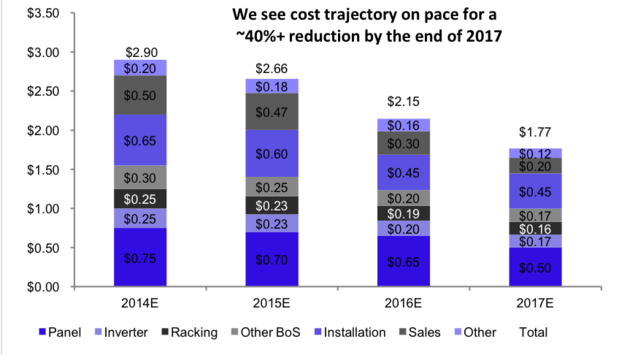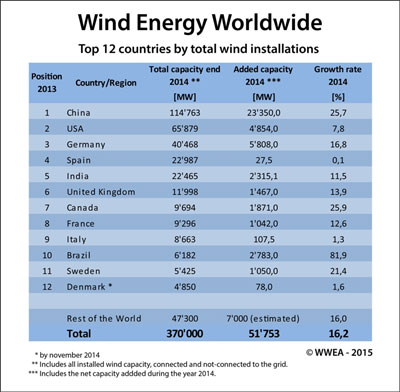By Andrew Donohue This is Rio Mesa High School in seaside Oxnard, California.

Credit: Sam Hodgson for Reveal
Beautiful, isn’t it?
Here’s what happens when you overlay state pesticide data on a map of the school.

Those are strawberry fields that line Rio Mesa on all four sides. And strawberry growers are prolific users of hard-to-control pesticides. That means that 2,100 students and teachers spend their school day surrounded by fields treated with heavy amounts of some of the most dangerous pesticides in use.
Growers in the fields in front of the school, for example, used 770,300 pounds of the riskiest pesticides around – what public health officials call “chemicals of concern” – over the past decade, according to state data that we mapped.
This worries Ventura County Supervisor John Zaragoza. The Oxnard official is calling for a county investigation into pesticide use around Rio Mesa after our story revealed a loophole created by the state’s pesticide regulator put people in more than 100 communities statewide – including around Rio Mesa – at greater cancer risk.
“I think it is important that we know what is being sprayed near our schools and homes and what effect it is going to have on our families,” the Ventura County Star quoted Zaragoza as saying.
He also wants to know what, if anything, the county can do about it since most pesticide regulation is done at the state level. A group of county officials is supposed to report back to the Board of Supervisors later this month with its findings.
Plenty of Zaragoza’s constituents have the same questions. Fortunately, we already have some of the answers. We spent many months compiling state pesticide data, combing through dense studies and talking to scientists who study the issue.
Rio Mesa isn’t alone. Many schools in the strawberry-growing centers of Ventura and Monterey counties are near or next to fields treated with these pesticides. But looking specifically at Rio Mesa helps illuminate the public health trade-offs that officials make so that growers can use these pesticides.
Here are some of the questions that Zaragoza is asking, and our best attempt at answering them.
Are students and teachers inhaling the pesticides?
Yes.
The school principal takes great pains to coordinate with growers to ensure that pesticides aren’t applied while students and teachers are in the school. But that only goes so far.
Strawberry growers rely on a class of pesticides known as fumigants. They are hard-to-control gases that get pumped deep into the soil. Inevitably, some of those gases rise up out of the earth and linger in the air, even when the fields are covered in plastic tarps.
Unbeknownst to the principal or teachers there, the state has had an air monitor at Rio Mesa for years. And those monitors have picked up levels of 1,3-D lingering in the air.
Joseph Frank is a retired state toxicologist who oversaw 1,3-D research for the Department of Pesticide Regulation. By definition, Frank said, if the monitors are picking up the pesticide, teachers and students are inhaling it.
Will that affect the health of students, teachers and residents?
It increases the probability of potential harm.
This is where it gets complicated. It’s nearly impossible to trace any one person’s health problem back to the steady, low-dose exposure that you’d get from living or working near the fields. Plus, cancer can sit latent for 15 or 20 years before appearing. Any effect from pesticides over the past decade might not pop up for years to come. The science just isn’t there yet, Frank said.
He compares it to smoking. Even if every student at the high school smoked, he can’t guarantee that any one of them will get cancer. It’s too small of a sample size.
So scientists rely on statistics and probability to project potential damage to human health. Students are being exposed. And the probability of potential harm is increased for anyone being exposed.
These probabilities are built into how the government regulates pesticides.
The state Department of Pesticide Regulation’s stated mission is to protect public health and the environment from pesticide use. In reality, the department undertakes a balancing act between public health and the economic benefits of pesticides.
Staff scientists put together comprehensive reports about the potential health effects of different pesticides on workers and neighbors. A politically appointed manager then weighs the public health risks against the benefits the pesticide offers growers trying to run a business feeding the world. The manager then creates rules around how much of the pesticide can be used and how.
Some pesticides present acute risks – the kind of immediate health problems you’d get from inhaling a big gulp during an accident. Others present chronic risks. These are low-dose exposures you don’t even realize you’re getting over long periods of time.
For example, with 1,3-D, the state decided that its benefits are worth causing one probable cancer case per 100,000 residents. (The state’s own scientists wanted a more conservative ratio of 1-to-1 million.) It’s nearly impossible to pinpoint who will get or got cancer because of it, making the victims faceless. If someone does get cancer from it, we won’t know who it is, and that person won’t know if pesticides caused it.
However, state officials ended up putting people at an even higher cancer risk than that. At the request of Dow AgroSciences, the company that makes 1,3-D, the state created a loophole that allowed growers to use significantly higher amounts of 1,3-D than the original regulations envisioned.
Beyond that limit, Frank said, the risk becomes significant. “Anything above that would be to the scientists unacceptable,” he said.
Here’s how Frank described it when we asked him whether people in places like Oxnard should be concerned about getting cancer:
“I can’t tell them that they’re actually, they’ve crossed the line, two of their kids are going to have a problem.“I can’t say that because you have to look at the entire population when we try to make these estimates and these predictions and so, for a single family, it may be totally harmless.“As an analogy, a person may smoke for 90 years and never get lung cancer and that happens, but people who smoke, who chronically smoke are far more likely to get lung cancer and have other heart ailments and other issues than people who don’t smoke. And I’m convinced of that, but I can’t tell your grandfather that his smoking is absolutely positively going to give him cancer. I can’t say that. His individual metabolism, his defense systems, just works such that it didn’t happen.“Then again, you can have somebody that gets lung cancer at a much younger age.”
Dow AgroSciences, meanwhile, disputes the idea that 1,3-D causes cancer in humans to begin with. The state officials who allowed growers to go past the health limits maintain that no one was harmed (though other scientists backed Frank’s interpretation).
So what chemicals are being used near Rio Mesa and what are their specific risks?
For the full breakdown of chemicals and their risks,
play around with our pesticide map.












 Deutsche Bank
Deutsche Bank

